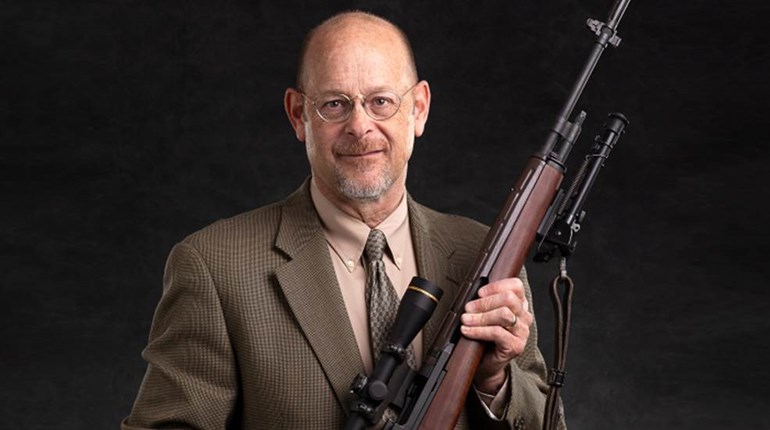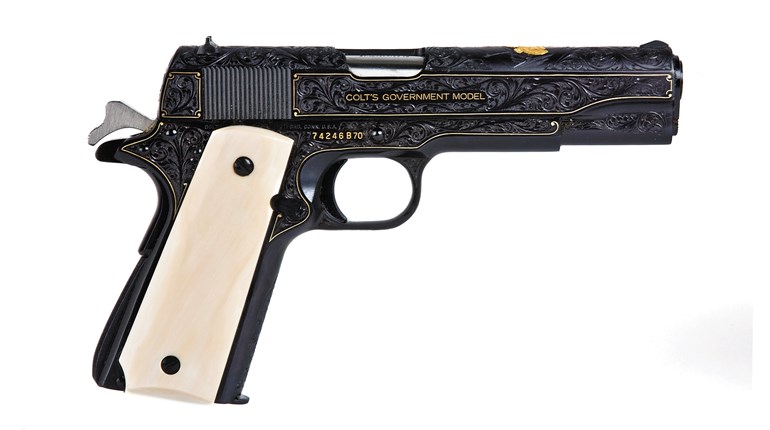
The building was busy that afternoon. A hastily erected structure of corrugated sheet metal with concrete floors, it was a veritable Hilton Hotel compared to the thatched-roof shacks and occasional Quonset nearby. Alongside a very busy airfield made of those interlocking steel plates, the building offered limited shelter for Americans going about their business. The business was that of an airline passenger terminal in wartime Vietnam, specifically Da Nang, I Corps—and everybody had a gun.
Armies of various ideologies had been scrapping for decades in Vietnam before America got into it. In 1965, when I first saw the battered building that was the Da Nang air terminal, the detritus of other armies and earlier wars was much in evidence. I passed through there several times and often saw personal firearms of many types. Lots of different rifles, many varieties of handguns (including a puzzling variety of Smith & Wesson revolvers) and even a few shotguns were all present.
Somehow though, the submachine gun seemed to be the odds-on favorite for the varied personnel who waited for their flight to places unspecified and used the makeshift benches at this Terry-and-the-Pirates facility. Since regular soldiers and other personnel from a host of countries had done their thing in the green hills of Vietnam, the variety of submachine guns (SMGs) was not surprising. There were a lot of British STEN guns of various models present, even one with an early suppressor.
The reliable, if somewhat bulky, German Schmeisser was pretty ordinary, as was that superb French MAT 49. Most of those had been converted to the .30 Mauser cartridge in NVA armories, but I also saw them in the original 9 mm. Australian soldiers had their Austens. Several models of Italian Berettas in both World War II and later models might be seen. American M3 grease guns? Sure, a common gun. But, the grand-old Thompson of many variants, to include a commercial 1928 with twin pistol grips and the iconic drum magazine?
Submachine guns have fallen from favor in this 21st century world of battle rifles, but they were all the rage in the 1960s. As a guy who looked at, handled, fired, disassembled and studied all kinds of infantry small arms, this part of my Vietnam experience was interesting. It got quite so one day when I was passing through Da Nang and saw a guy in civilian clothes carrying a unique SMG suspended from a braided-leather strap. I could clearly see the gun was a Danish Madsen M50 9 mm. The gun’s owner was not disposed to converse about his gun or any other topic, so I never got the full story of how a Danish SMG made its way to this exotic locale. That story, I never knew. But, as a longtime reader of W.H.B. Smith’s “Small Arms of the World,” I knew exactly what the gun was.
Many countries of the post-World War II period experimented with new designs in small arms. This was particularly true of all-metal SMGs. Denmark’s Madsen was first offered for police/military users in 1946. Their basic design was improved several times over the years, but the 1950 version was probably the most-widely distributed. In limited numbers, the gun sold in South and Central America. A strict, slam-fire blowback, the M50 fired from an open bolt and had no provision for selective fire.
Unlike several contemporary SMGs that used heavy steel tubing for the basic receiver shape, the M50 worked around a pair of matching so-called “clamshell” halves. Hinged at the back end, the matching left and right halves provide a track for the reciprocating bolt and a seat for the trigger mechanism. A loading device came with each gun, housed in the rear pistol grip. To strip for cleaning, the shooter removed the magazine and unloaded the gun. He then unscrewed and removed a knurled nut at the base of the barrel. The clamshell halves now open like a book and the barrel, bolt, recoil spring and guide lift out.
It’s really simple—you can pull the gun apart for field maintenance in less than a minute. A buttstock, made of heavy steel tubing covered with stitched-on leather, folds forward along the right side of the receiver. I had never handled or fired one of the elusive Madsen M50s, so all of this was purely academic.
Then, under circumstances I cannot relate, but during my tour of Vietnam, I made a trade that gave me—you guessed it—a Madsen M50 in used, but sound mechanical condition. After a few days of handling and stripping, etc., I was impressed with this unique mechanism. I was also intrigued by the fact that my new gun bore no markings as to maker or other identifying characteristics—no serial number. My best efforts to scrounge some 9 mm ammunition were not productive. Nine millimeter was not in the USMC supply system, and I had changed jobs that didn’t have me traveling all that much.
Then, I stumbled on an extremely small quantity of old French-made 9 mm, some 19 rounds in a deteriorating cloth tobacco sack. I immediately found an open spot somewhere along Route One (yeah, the Street Without Joy) and loaded her up. I got off a short burst and...disaster. Instead of the characteristic crack, I got a louder boom. Looking down at the gun, I saw the right side of the receiver bulged slightly outward. After much forensics, I figured out what happened.
For some reason, the preceding shot created a complete case-head separation. The rear portion was torn completely free, leaving the front portion lodged in the chamber. The next shot was blocked from completely fitting into the chamber and fired out of battery. Although we tried to fix it, the gun never fired again. Many years later, my pal the late Chuck Karwan told me that other Madsens in the hands of his Special Forces buddies did exactly the same thing and the gun had a poor reputation among them. It was traced to a small batch of improperly finished barrels with rough chambers.
That’s a shame, because the gun worked well with a good chamber. Madsens were used in movies, showing up in the first two “Godfather” films and numerous TV shows. Before I left Vietnam, I destroyed mine, albeit reluctantly, as it was a machine gun and I was not allowed to bring that back in any condition. Besides, a gun that doesn’t shoot just isn’t proper fightin’ iron.






































